How to get on the Old Course
A party on Golfclubatlas.com asked about how to get onto the Old Course. I've played it a couple of times -- and have the photos to prove it. I wrote this story in 2003 after playing St. Andrews in an attempt to remove some of the myths about how hard it is to get a round at the fabled "home of golf."
Tee time at St. Andrews: If you haven't booked ahead, your best shot at getting on to the home of golf is the daily ballot
National Post
By: Robert Thompson
On a biting day in May, I stood shivering in the howling wind coming from the Scottish coast, just an hour after the sun appeared on the horizon. Strangely, given the conditions, I was about to become the envy of a large number of my friends.
I had done the unthinkable: obtained a slot for four on the Old Course at St. Andrews, the most famous golf course in the world. St. Andrews is also famous for being one of the most difficult places to actually get a round. Players often book more than a year in advance or pay thousands for one of the package tours that take them to the fairways of the birthplace of golf.
After flipping handicap notices and credit cards with the starter in the small hut near the first tee, we met our caddies, and at 6:40 a.m., with no warm-up and in conditions that rival Canada in November, I hooked my first drive down the larger-than-life fairway. Ten minutes later I had recorded my first par at the Old Course.
I didn't make plans to head to Scotland until late in 2002, so I thought my group and I would have little chance at a round at St. Andrews, which has hosted the British Open 26 times. The last time, in 2000, Tiger Woods managed to evade all of the course's fabled bunkers en route to winning the Claret Jug.
It was easy to book rounds at other world-famous Scottish courses; Carnoustie, which hosted the Open in 1999, simply took a credit card number, while Cruden Bay, among the top 100 courses in the world, told my group to just show up and play. But the Old Course at St. Andrews seemed like a mirage -- always slightly out of reach.
You can book a round at the Old Course if you are organized enough to plan your trip 18 months in advance. After that time advance rounds are extremely hard to obtain.
Without that foresight, or a round booked at the Old Course, my group set out for Scotland the second week of May.
However, I was still willing to try. One famed golf pro, now a prominent television announcer, told me to bribe the starter at St. Andrews.
How much should I offer? "It depends on how hungover the starter is," was the reply.
The thought I might offend someone at the home of golf dissuaded me from that plan.
Another option depended on playing with a local from St. Andrews, who have preferred access to the course. The only problem was I didn't know anyone from St. Andrews and there were four golfers in my group, which was one too many. The thought of drawing straws to determine who wouldn't play wasn't a comforting concept.
Yet another: Single golfers who show up as soon as the starter arrives in the morning can often be paired with other groups. But we had four golfers in our party, so this wasn't an option.
One option remained: The daily ballot.
While demand makes it extremely hard to play the Old Course, it is still a public facility. So available to the public, in fact, that cars drive across the first fairway and townspeople can regularly be seen walking dogs or pushing prams along its fairways. The Old Course, you see, is built on public land, which means it belongs to the town.
With this democratic notion in mind, the Old Course uses a ballot to give hopeful players the opportunity to hit a ball into the Sands of Nakajima, the bunker that sits next to the green at the 17th hole.
It isn't difficult to enter the ballot. Joe, our host at the hotel we were staying at while playing Carnoustie, made the call for us. At lunch, when we encountered Joe, he had hopeful words for us.
"I know the guy who took the call and he says it shouldn't be a problem. I told [him] you wanted to play early, so you could get another round in that afternoon."
When we arrived back at the hotel, beaten and battered from our second round of the day at Carnoustie, the site of Jean Van de Velde's meltdown at the 1999 British Open, Joe was at the door to give us the news. We'd been picked to play the Old Course the next say as the second group off. That meant we'd have to get up at 4:30 a.m. to make the hour-long drive to St. Andrews.
When we arrived, the temperature was just above freezing, although the sky was clear. The first hole, with the famed Royal and Ancient clubhouse -- European golf's ruling body -- in the background, sits at the edge of town. Usually tourists linger, taking in the golf course. But at this hour the town was silent.
We waited for the starter, who arrived at his hut off the first green five minutes before the first group was to tee off at 6:30 a.m.
Then, along with my brother, Christopher, as well as Bob and Paul, two siblings who joined us on our Scottish pilgrimage, we saddled up to the starter.
Unlike most public courses, St. Andrews requires players to have a degree of skill and to carry a handicap card from a noted golf organization. Men must play to 24, meaning they will regularly shoot around 96, and women as high as 36, meaning they are not likely to break triple-digit scores. No handicap card, no golf -- that's the rule at St. Andrews.
After having your handicap card scrutinized, players need to fork over their credit card and hand over the equivalent of around $250. Once through, players can head to the first tee.
If you're tackling the Old Course for the first time, you should be prepared to ante up for caddies, which cost around $75, plus tip, which usually amounts to another $20-$25. Without a caddy you'll likely struggle to find your way around the course with its blind tee shots, massive double greens and convoluted routing.
At $350, my round at St. Andrews was the most I have ever paid to hit a little white ball around a field. Still, there isn't any golf experience that rivals playing the Old Course. Three and a half hours after we hit our first shot, we approached the 18th hole, which heads back toward the clubhouse, and crossed the Swilcan Bridge. By mid-morning, tourists had come down to the course to watch terrified amateurs hit approach shots to the 18th green. I managed a par after hitting a sand wedge to 20 feet, while my brother drew applause from the crowd with a brave chip from the Valley of Sin, the grassy dip that fronts the final green.
Was it worth $350? You bet it was.


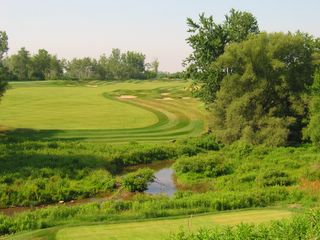


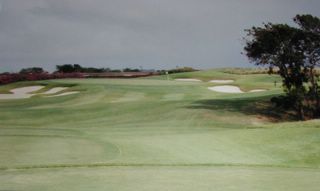
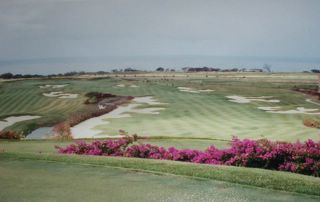
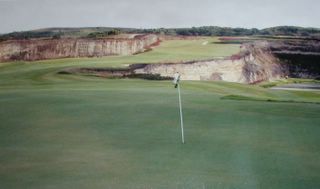


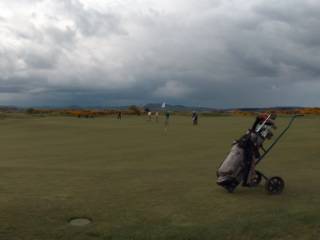





 Blog Directory
Blog Directory
